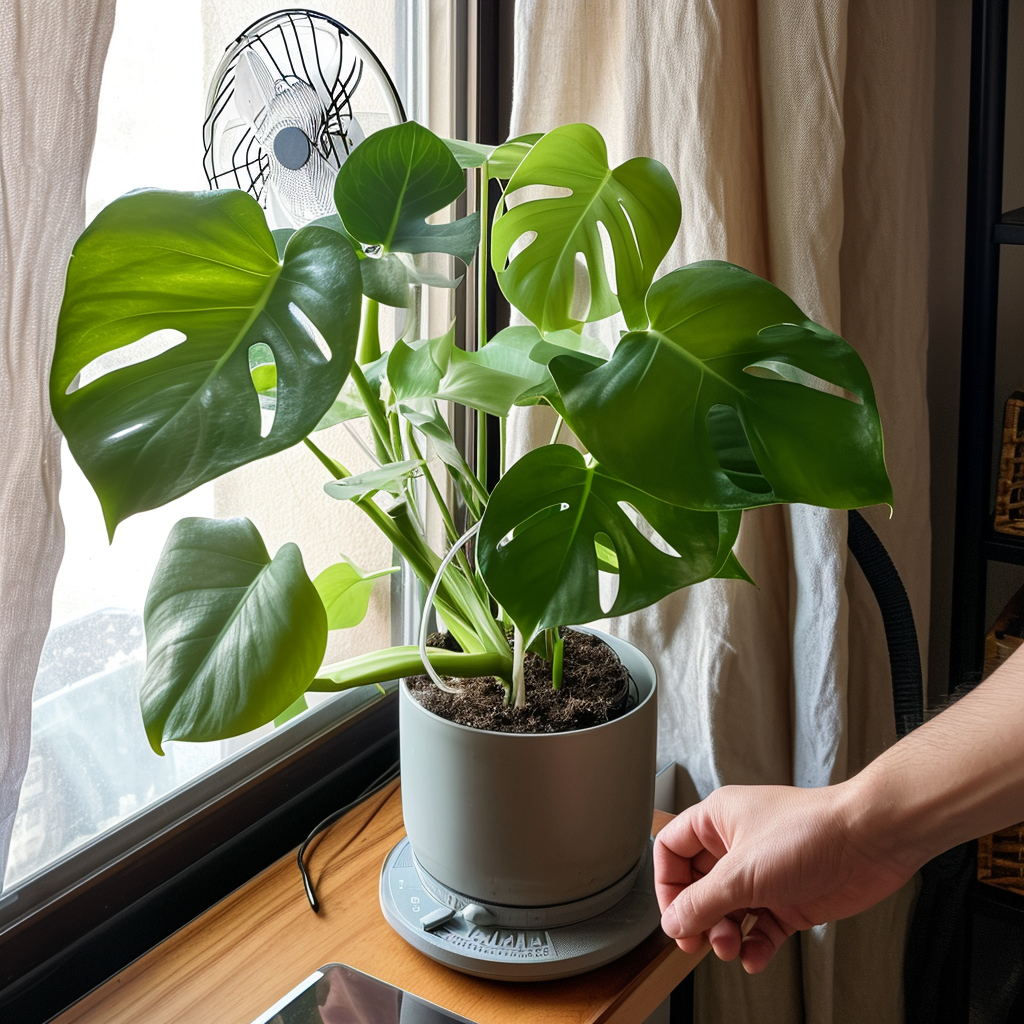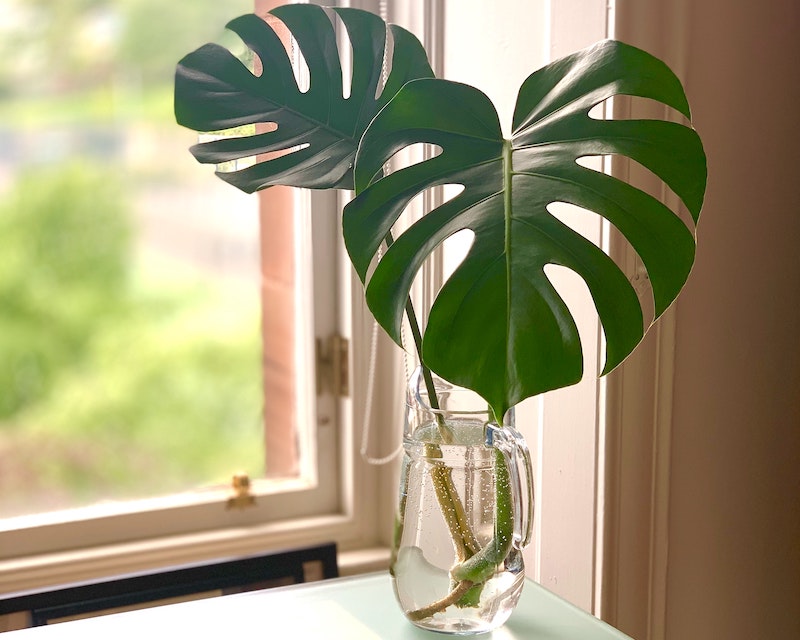The monstera plant, also known as the Swiss cheese plant, is a popular houseplant known for its large, glossy leaves full of iconic holes. But why do monsteras have these holes in their leaves in the first place?
Unique Leaf Structure
The monstera plant has a very unique leaf structure that develops and changes as the plant matures. When monsteras are young, their leaves are completely solid without any holes. But as the plants grow and climb upwards in search of light, the leaves begin to develop cuts and openings.

Leaf Splitting
As monsteras mature, their leaves actually begin to physically split and tear. The leaves feature natural fault lines where splitting occurs. These faults divide the leaf into a lattice-like structure. This natural tearing of the leaves results in the iconic monstera holes.
Genetic Adaptation
The development of holes and fenestrations in monstera leaves is actually an evolutionary adaptation. In the wild, monsteras grow as vines climbing up very tall trees. By developing holes in their leaves, monsteras allow light and air to pass through their broad leaves down to the lower parts of the plant. This ensures the entire plant receives enough light and airflow to thrive.
Benefits of Fenestrations
The intricate, lace-like holes in mature monstera leaves serve other important biological functions for the plant beyond structural support.

Find the perfect Monstera Variegated for your plant collection
Decreased Wind Resistance
The holes and spaces in monstera leaves substantially decrease wind resistance. With less solid leaf surface area, air can pass smoothly through the leaves rather than catching the broad leaves and knocking the plant over. This keeps the monstera stable even on gusty days.
Controlled Light Exposure
The fenestrations also help control and regulate the amount of direct sunlight reaching different parts of the monstera plant. More delicate, developing leaves and parts lower down can be shaded and protected from harsh light by the top layers of mature leaves. This balanced light exposure helps the plant grow.
Rate of Hole Development
The distinctive monstera leaf fenestrations develop slowly over time. There are a few key factors that affect the rate and extent of hole development.

Age
Younger monsteras with less established root systems and smaller vines will have fewer fenestrations. Monsteras often take 3-5 years to begin developing split leaves. Older, mature monsteras have extensive lacings and holes.
Light Exposure
Monsteras growing in brighter light conditions are more likely to develop faster leaf splitting. The more the plant has to support itself and reach for light, the more its leaves will tear.
Genetics
Some monstera varieties are genetically predisposed to faster and more extensive fenestrations. Varieties like Monstera adansonii tend to develop holes early on while borsigiana may take longer.
Propagating From Fenestrated Leaves
Mature, fenestrated monstera leaves can be propagated to grow new, genetically identical monsteras. These propagated plants will develop similarly shaped holes reflecting their parent plant.

Taking Cuttings
Use a clean, sharp knife or shears to carefully cut a leaf withSeveral holes from the stem. Be sure to capture an entire node so that aerial roots emerge.
Rooting the Cutting
Place the cutting in clean water or moist propagation medium like peat or perlite. Provide bright, indirect light. Roots and a new shoot should emerge within 4-8 weeks.
Potting the New Plant
Once the propagated cutting has developed a strong root system and new leaves, it can be potted in nutrient rich soil. Treat it like a young monstera, providing a moss pole for climbing support as it grows.
Conclusion
The iconic holes and intricate fenestrations of monstera leaves develop naturally as a genetic adaptation to support the plant’s growth towards sunlight. These lace-like holes also provide biological benefits like controlling light exposure and decreasing wind resistance. Monsteras must mature over several years before their leaves begin tearing and splitting open in unique patterns reflecting their natural development.
FAQ
- What is special about Monstera plants? Monstera plants are renowned for their unique and striking foliage. Their large, glossy green leaves are full of natural perforations and splits, giving them a distinctive and elegant appearance.
- How do I care for my Monstera plant? Monstera plants are relatively low-maintenance. They thrive in bright, indirect light and prefer well-draining soil. Water them moderately and allow the top inch of soil to dry out between watering. Regularly clean their leaves to keep them looking vibrant.
- Are Monstera plants suitable for beginners? Yes, Monstera plants are often recommended for beginners due to their forgiving nature. They can tolerate some neglect and adapt to different indoor conditions, making them an excellent choice for those new to plant care.
- Do Monstera plants require special pruning? While not mandatory, pruning can help shape your Monstera plant and encourage bushier growth. Trimming dead or yellowing leaves and cutting back leggy stems can promote a healthier and more attractive plant.
- Can I propagate my Monstera plant? Yes, Monstera plants are known for their ease of propagation. You can propagate them through stem cuttings, which root readily in water or soil. This allows you to share your Monstera love and expand your plant collection.

